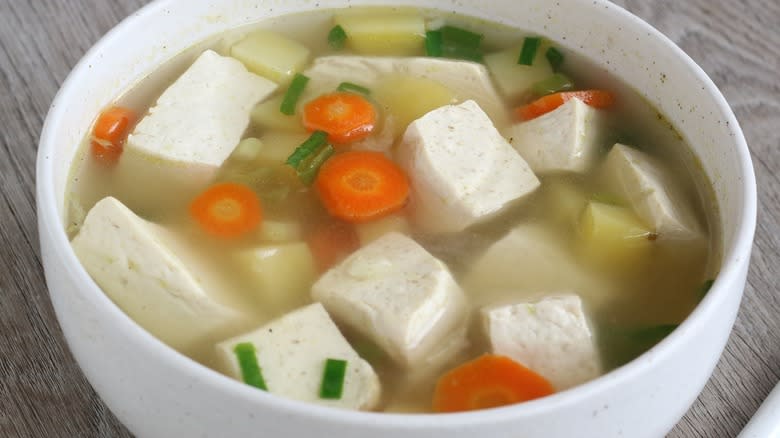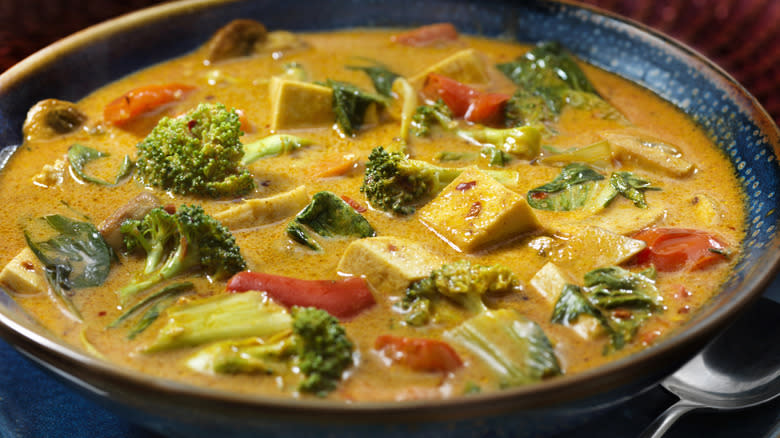Avoid This Mistake When Adding Tofu To Soup

Despite the wealth of meat substitutes now available, tofu remains one of the most widely known and nutrient-rich proteins with unmatched versatility. Tofu encompasses a range of textures, from silky and creamy to chewy and meaty. And its neutral flavor is the main source of its adaptability into countless recipes that will make you fall in love with tofu. We can pair it with any number of glazes, marinades, or sauces to impart the flavors that the soy-based product will easily absorb. Still, there are a few important tofu preparation tips you'll want to follow.
Draining and pressing tofu are standard protocols to ensure that it achieves its maximum absorption capacity. Even when you submerge tofu into a soup recipe, draining is still the first step to take before adding it to the broth. While you might think that you can skip draining your tofu if you're going to be adding it to liquid anyway, you'd be making a grave mistake. Tofu comes packaged in water, which we drain and squeeze out of a block so that it becomes a sponge for flavor agents.
The same applies to soups; by draining and pressing tofu, we allow it to absorb and take on the flavors in the broth. If you just add tofu directly from its water-filled container to your pot, it'll be too waterlogged to absorb anything. If you're using medium, firm, or extra-firm tofu, you can also tack on pressing your block of tofu and patting it dry to maximize its absorption. Soft or silken tofu needs only to be drained before adding it to soup, as pressing it would crush it.
Read more: 20 Popular Canned Soups, Ranked Worst To Best
More Tips For Adding Tofu To Soup

All types of tofu will taste delicious in soup. Both Japanese miso soup and Korean kimchi sundubu jjigae commonly use silken tofu. Vegetarian versions of the Thai tom yum soup or Vietnamese pho, meanwhile, use meaty chunks of firm tofu for heartiness. The type of tofu you use will help dictate preparation and when to add it to your soup recipe.
If you're using firm or extra-firm tofu, you can add it at the beginning of your soup building process, as its thicker, sturdier texture will maintain its shape as it simmers in broth for an hour. You could bolster the firm tofu's texture and shape by first frying, searing, or baking it to create a crispier crust. For that matter, you can also sauté cubes of tofu with the aromatics used as the foundation for your soup, ensuring that the tofu crisps up as the aromatics brown before adding your veggies and broth.
If you're using soft tofu and want it to hold its shape, you only need to drain it and pat it dry before slicing it into cubes. You'll also want to add soft tofu to a fully developed soup at the tail end of its simmer. If you let soft tofu simmer for too long, it will break down. Silken tofu is even more delicate, only requiring you to drain it before use. Silken tofu is a great thickening agent to blend into the broths of chowders or cream of vegetable soups -- and that's just one of this soft tofu's many uses.
Read the original article on Tasting Table.


